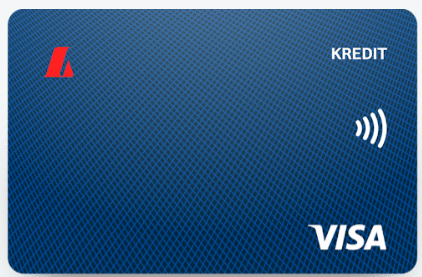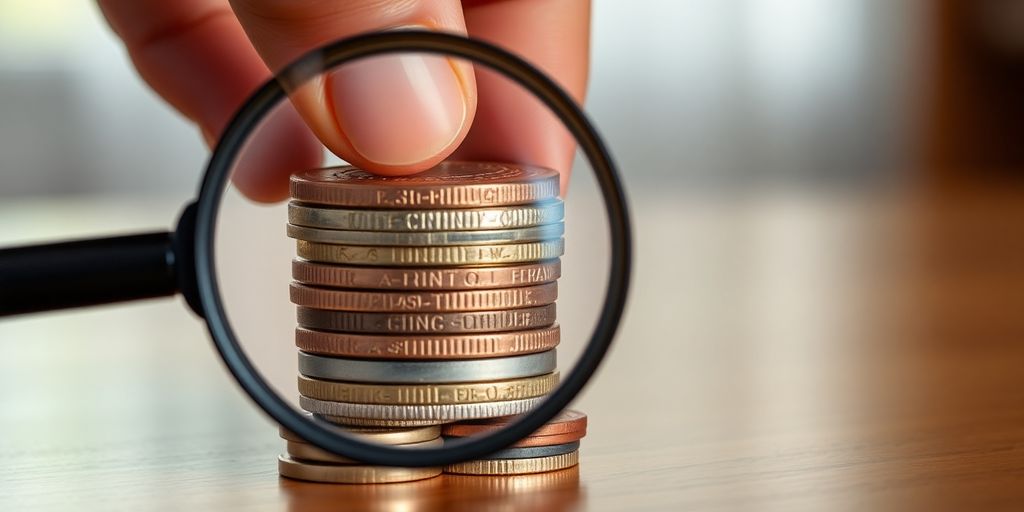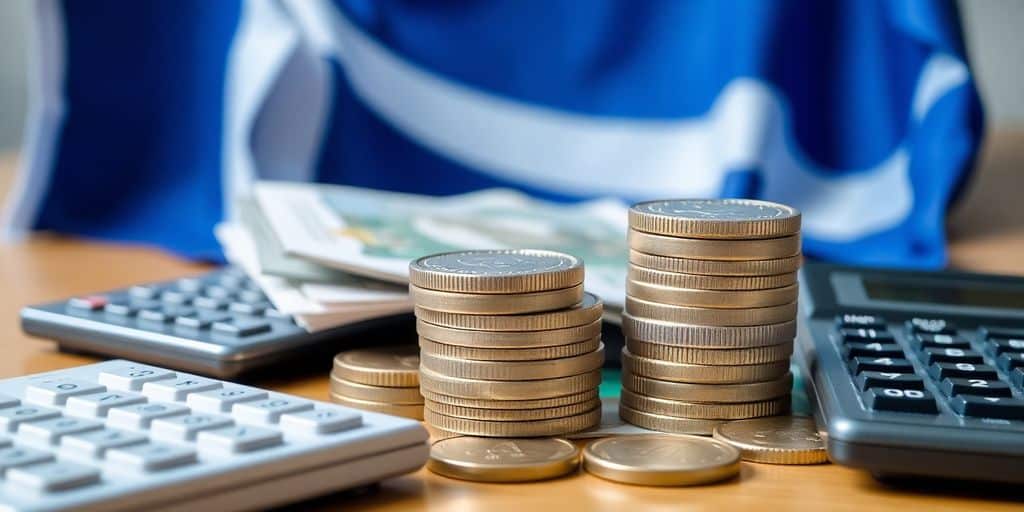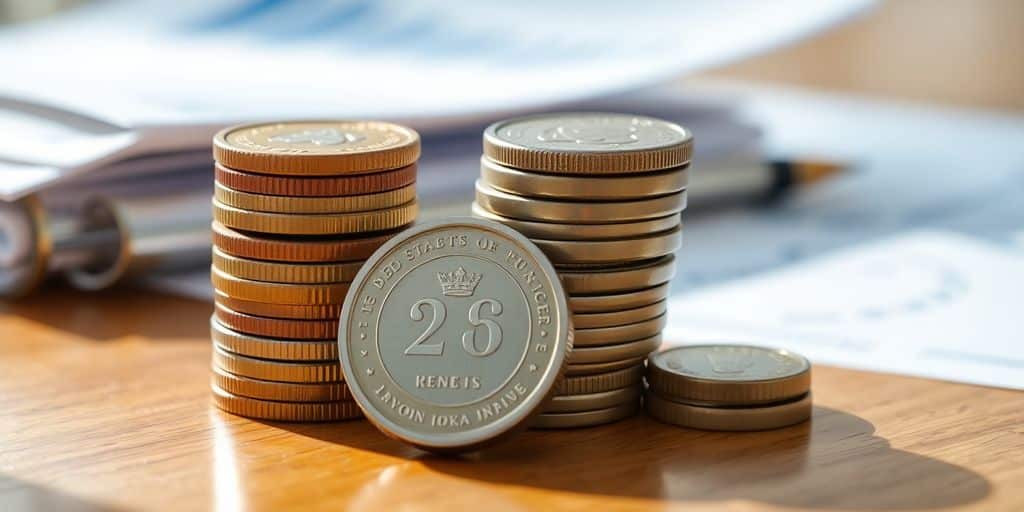Anúncios
Do you want a card for all occasions?
Iceland’s economy faces the tough challenges of inflation and keeping prices stable. Despite being small, the country is strong. It uses smart strategies to manage inflation and keep the economy balanced. Iceland sets clear policies to lessen the impact of worldwide changes on its economy. It’s important to understand Iceland’s unique methods and history in keeping prices stable.

Landsbankinn General Card

Anúncios
Iceland’s Unique Economic Landscape
Iceland’s economy is unique due to its small size and reliance on tourism. This sector has grown to become vital for economic growth. It has shifted from mainly focusing on fishing to embracing various industries. The country’s natural resources are key to this transformation.
Iceland has a lot of geothermal and hydroelectric power. This makes it great for renewable energy use. Affordable energy attracts industries like aluminum smelting. This helps Iceland use its natural resources well and protect the environment.
Tourism is a major part of Iceland’s economy. It draws people who want to see its beautiful scenery and culture. However, this makes the economy vulnerable to global crises. The COVID-19 pandemic showed the need for Iceland to support other industries too.

The Historical Context of Inflation in Iceland
The history of inflation in Iceland is marked by highs and lows. After World War II, the inflation rate in Iceland was about 10% on average. The 1970s were a tough time, with inflation shooting up to around 40%. This massive increase was due to rising global oil prices and Iceland’s relaxed money policy causing economic challenges.
In 2001, efforts to control inflation began, aiming for a 2.5% inflation target. But, Iceland still saw big changes in inflation rates. Especially during the 2008 financial crisis, when the economy nearly collapsed. These events show how hard it is to keep a steady financial course and manage money policies well.
Iceland’s Inflation Targeting Framework
In 2001, Iceland decided to tackle its inflation issue head-on. They did this by setting up a system with a clear goal: keep inflation at 2.5%. This move was to fight the high inflation they had before. But, managing inflation proved tough. More often than not, inflation went over the target. This caused people to question the strategy and led to changes.
The Central Bank of Iceland didn’t just sit back. They constantly checked how well their plan was working. They saw areas that needed improvement, like how decisions were made and shared with the public. Making these changes could make Iceland’s economy stronger. It could also set a new benchmark for how countries manage their money.
Post-Crisis Monetary Policy Reforms
After the 2008 financial crisis, Iceland made key changes to stabilize its economy. These changes focused on how decisions were made, which helped control inflation better. The goal was to make the economy steadier and ensure policies worked well.
The Central Bank was crucial in these reforms, making its actions clear to everyone. This helped people trust and understand the economic plans. Thanks to these efforts, inflation rates dropped, and financial stability improved.
Thanks to smart policies, Iceland’s economy is bouncing back stronger. These policy changes have built a good base for a stable, prosperous future. Iceland is now better equipped to handle past challenges.
The Impact of Global Factors on Iceland’s Inflation
Global elements like wage increases, commodity costs, and changing trade affect Iceland’s inflation. They mix with local conditions, creating a complex economic scene.
High housing costs push inflation up. Changing energy prices also affect it, impacting both what people pay and company costs. This situation makes it essential for leaders to keep a sharp eye on economic changes.
Things like global conflicts or big market changes can make inflation worse in Iceland. As the world economy changes, Iceland becomes more exposed to these shifts. Leaders need to watch these changes closely to keep prices stable and reduce risks.
Inflation and Price Stability: Iceland’s Path
Iceland’s economy shows unique spending patterns that greatly affect inflation and price stability. The link between how people spend money and inflation trends is key. About 50% of Iceland’s GDP comes from what people buy and use. Knowing how these spending habits change helps us guess what might happen in the economy later.
Understanding Consumption Patterns in Iceland
Icelanders have varied tastes and spending habits, from basics to luxury items. Their spending changes with the economy’s health. When people feel the economy is strong, they spend more. But if things seem unsure, they might hold back. For instance, when more tourists visit, prices can go up due to higher demand. This shows how sensitive the market can be to changes.
Examining Key Economic Sectors
Looking closely at important parts of Iceland’s economy gives us more insight into its economic health. Tourism, energy, and making things are crucial. Tourism boosts business for local shops and services, affecting inflation. The cost of energy influences how much it costs to make products. Seeing how these areas connect helps us understand their effect on the economy.
Resilience of Iceland’s Economy Post-Crisis
After the 2008 financial crisis, Iceland showed great resilience. It did so through specific economic recovery efforts. By implementing regulatory reforms and strategic measures, it stabilized its economy. These actions rebuilt trust among investors and its people.
Recovery from the 2008 Financial Crisis
Iceland bounced back from the crisis impressively, revitalizing key sectors. Tourism became a major part of its economic revival. It attracts millions of visitors every year. Besides, focusing on renewable energy helped Iceland become more energy-independent. This sparked more investment and innovation. These efforts led to an environment where sustainable growth is possible.
Current Economic Growth Projections
Forecasts for Iceland are looking up, with GDP growth expected to beat Western Europe’s average. High international demand and a booming tourism sector feed this positive view. However, managing economic recovery while keeping inflation in check is a challenge. Policymakers work hard to ensure growth doesn’t trigger high inflation, which could hurt these advancements.
Challenges Facing Iceland’s Economy
Iceland’s economy faces a tough road filled with challenges that affect its growth and stability. Issues like wage growth outpacing productivity are big reasons for this. These problems lead to rising prices, especially in the housing market, making it hard for many people to afford homes.
Wage Growth and Housing Market Pressures
When wages go up but productivity doesn’t, it hurts the housing market. People earning more expect better homes, which raises demand. Consequently, house prices climb, making it hard for many to buy a home. Several things cause this issue:
- Building costs are going up, affecting housing supply
- People want better quality homes
- There are not enough affordable homes available
Global Economic Instability
Iceland also faces challenges from the world economy. Things like changing trade patterns and financial market shifts affect jobs and investments in Iceland. These global issues threat Iceland’s financial balance. To handle this, Iceland must:
- Keep an eye on international trade
- Understand how global downturns might impact it
- Create flexible financial plans
Monetary Policy and Financial Stability
The Central Bank of Iceland is key to the country’s financial health. It uses monetary policy tools wisely. A main tool is setting a high interest rate, sometimes up to 8.5%, to keep inflation in check. This keeps prices stable and builds consumer trust.
The Bank also uses special tools beyond regular policies to reduce financial risks. With Iceland’s economy tied to the global market, these steps are crucial.
Clear communication about fiscal strategies is another way the Bank builds confidence. Balancing inflation control with economic growth is essential. It ensures Iceland can handle challenges at home and abroad.
Future Outlook for Iceland’s Economy
Iceland is planning for the future, focusing on meeting inflation goals and growing the economy. It’s important to watch how inflation affects everyone, from everyday people to big companies. Long-term plans are essential for keeping the economy strong.
Iceland is working on making its economy more varied. This means focusing more on new areas like tech and green energy. These fields will not only create more jobs but also help keep the environment safe. As things around the world change, Iceland must be flexible and innovative to meet both local and global needs.
Conclusion
The journey through Iceland’s approach to inflation and price stability shows us its clever tactics. Iceland uses a strong money plan to keep its economy steady against world market changes. Its smart way of keeping inflation in check shows important steps to protect its economy from big troubles.
Iceland’s economy is a great example because it can quickly adapt. Understanding Iceland helps us learn how other countries can handle their own inflation issues. This way, other countries can make better rules to keep their economies stable.
Keeping inflation and prices stable is very important. Iceland shows us how to stay ready and use new ideas in a shaky global economy. Their approach not only keeps their economy safe but also guides others on how to achieve lasting stability.


